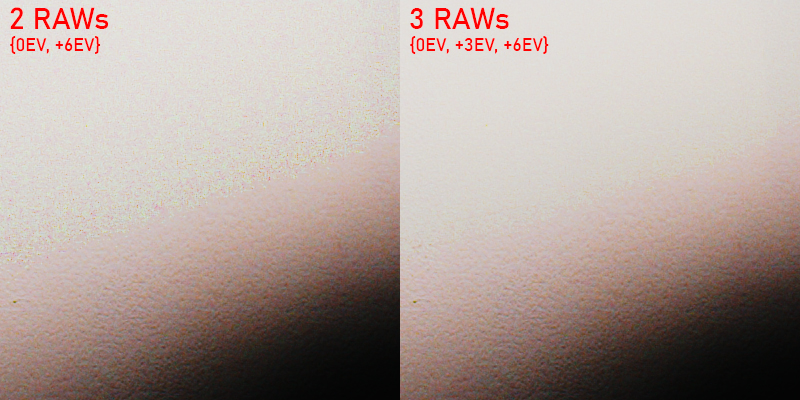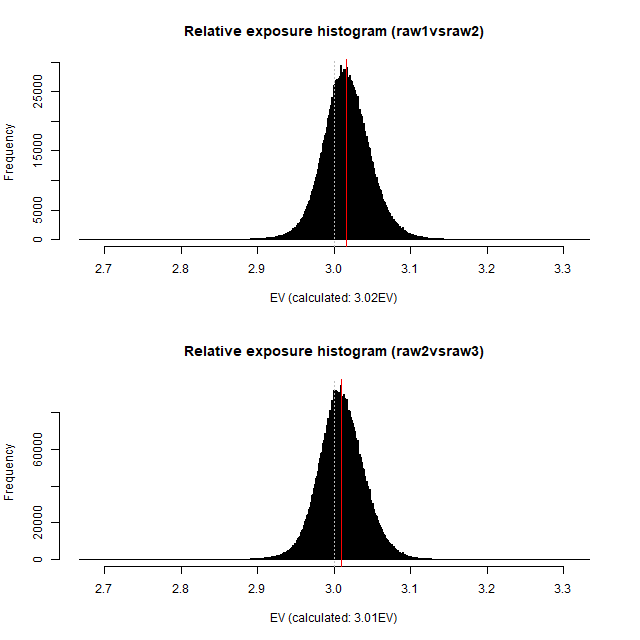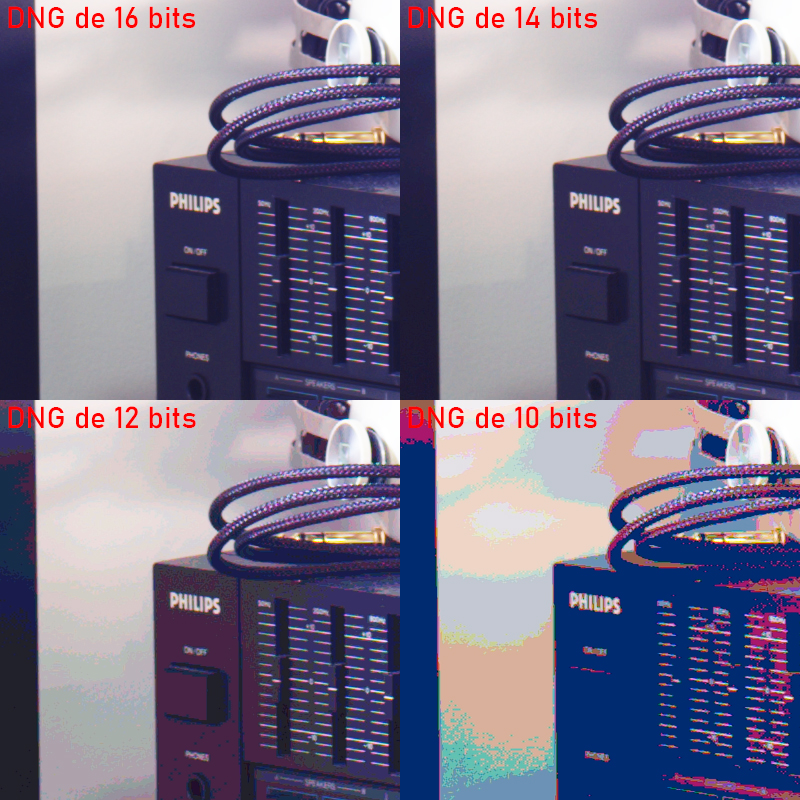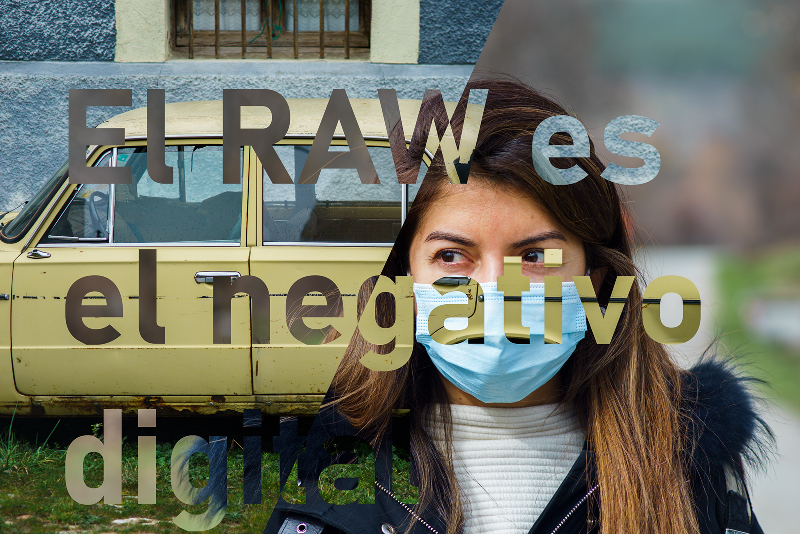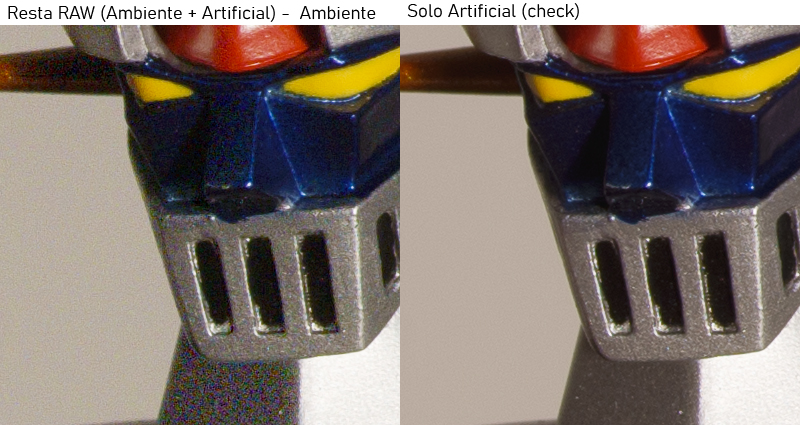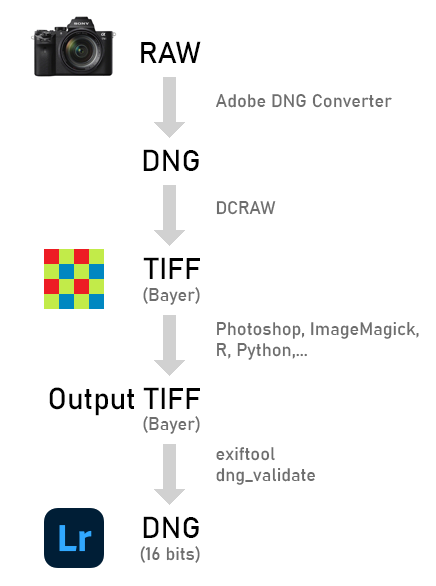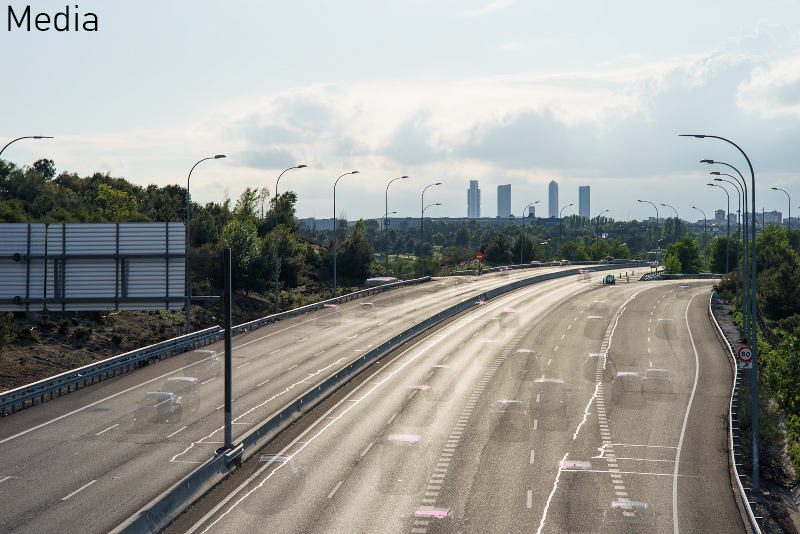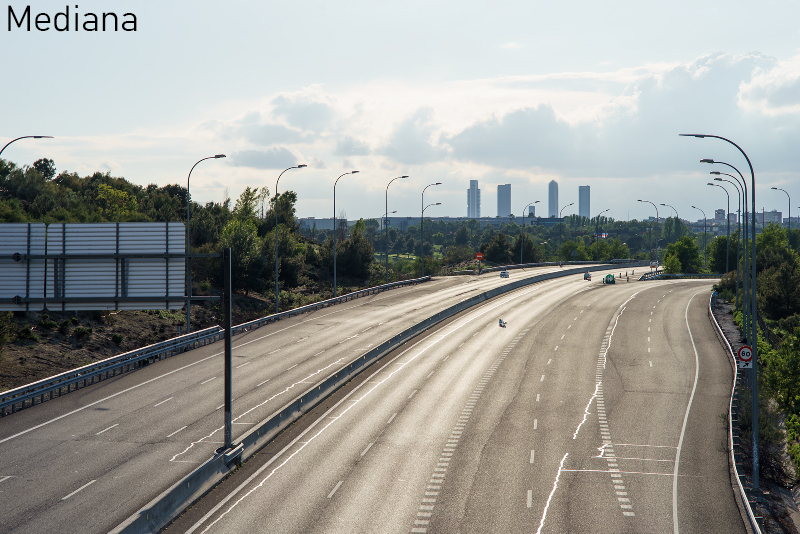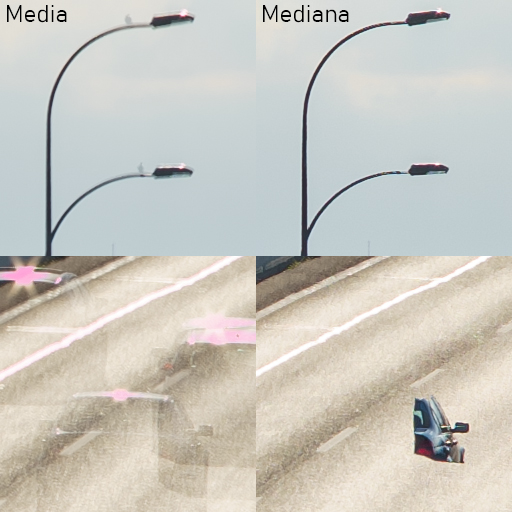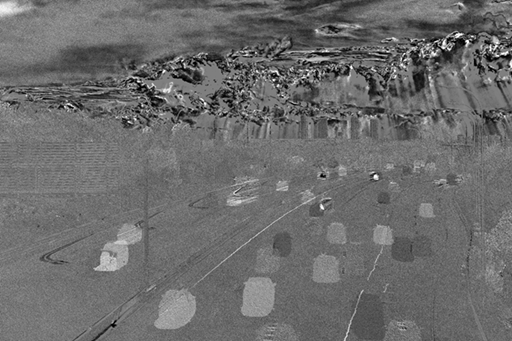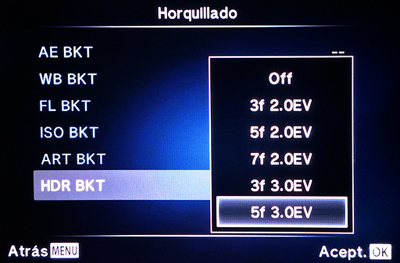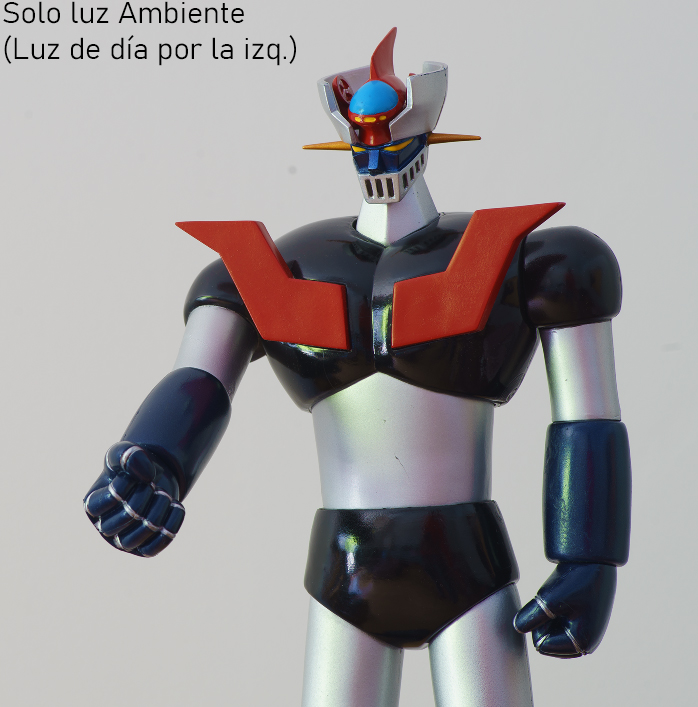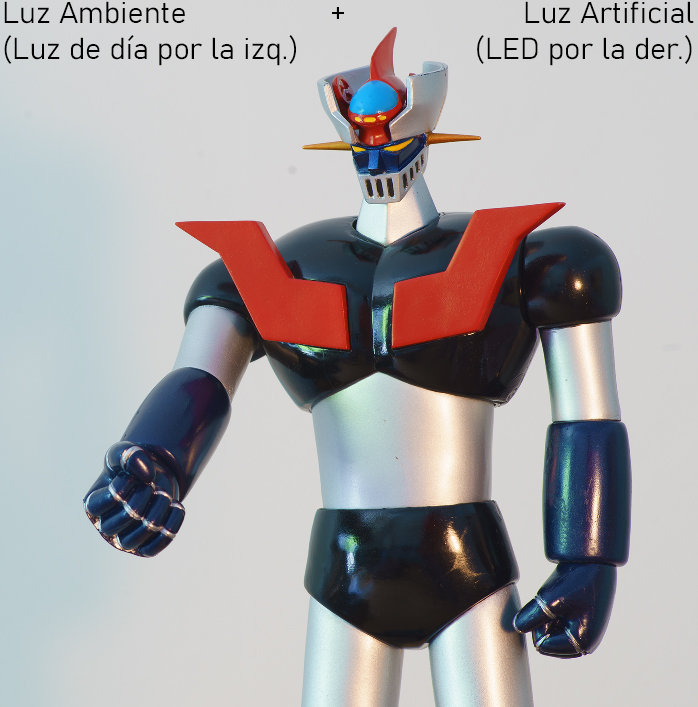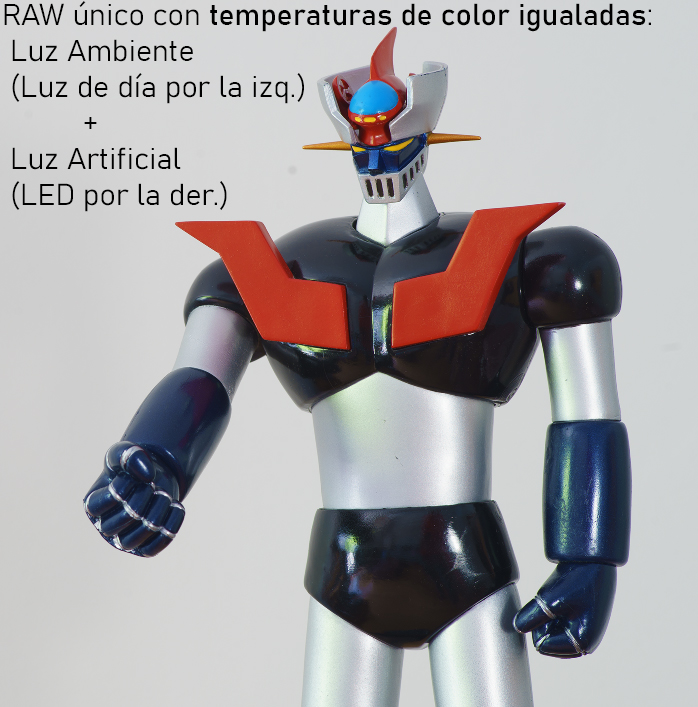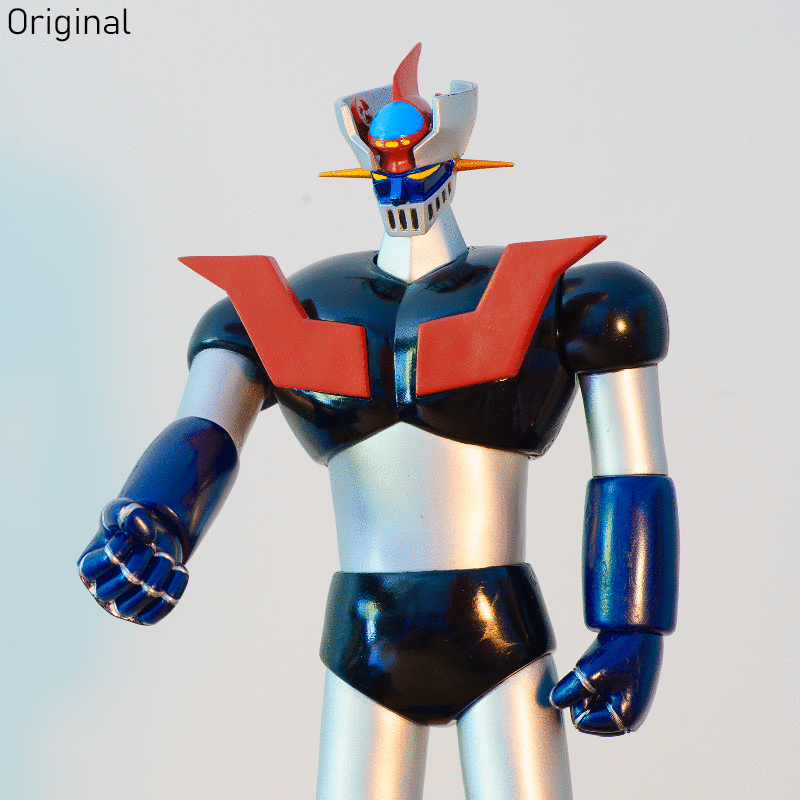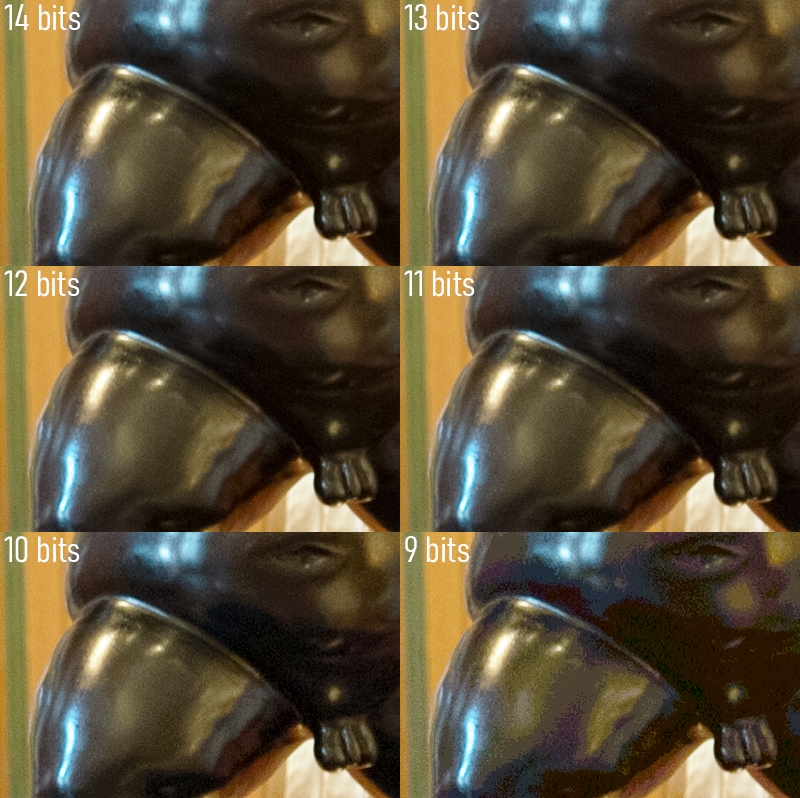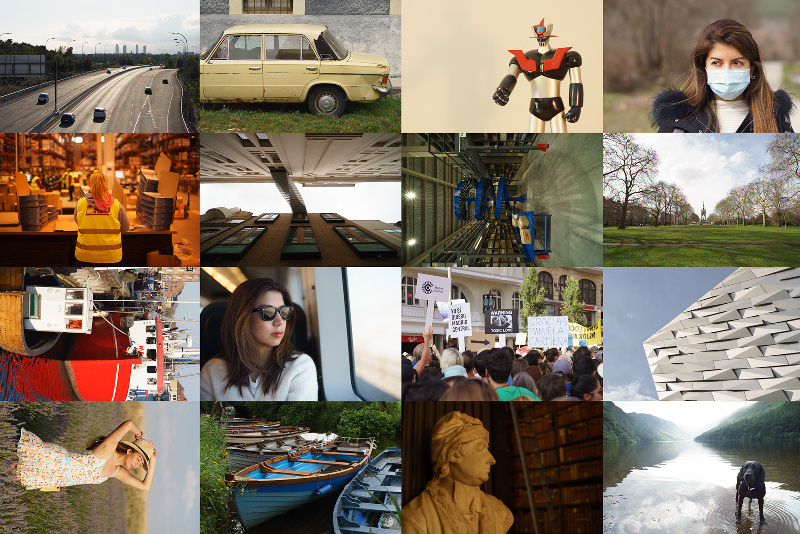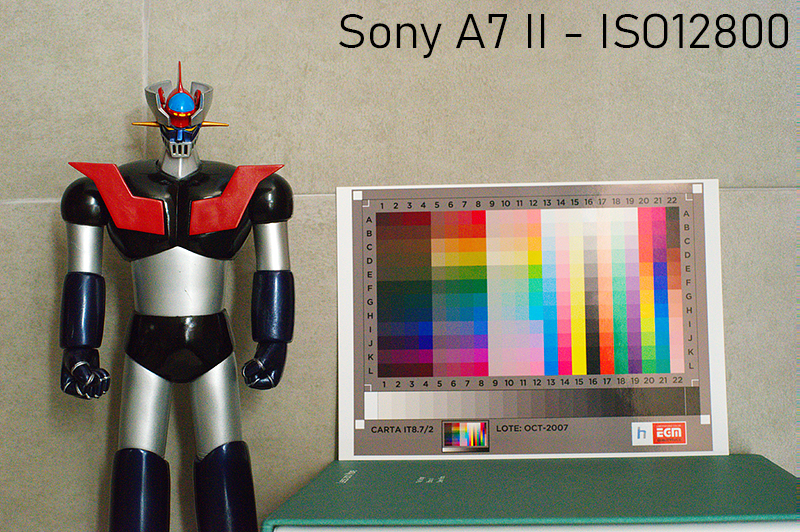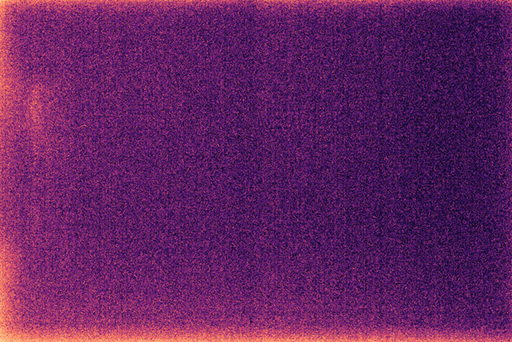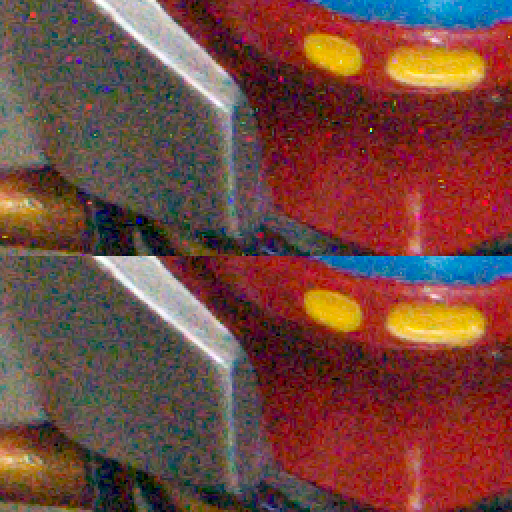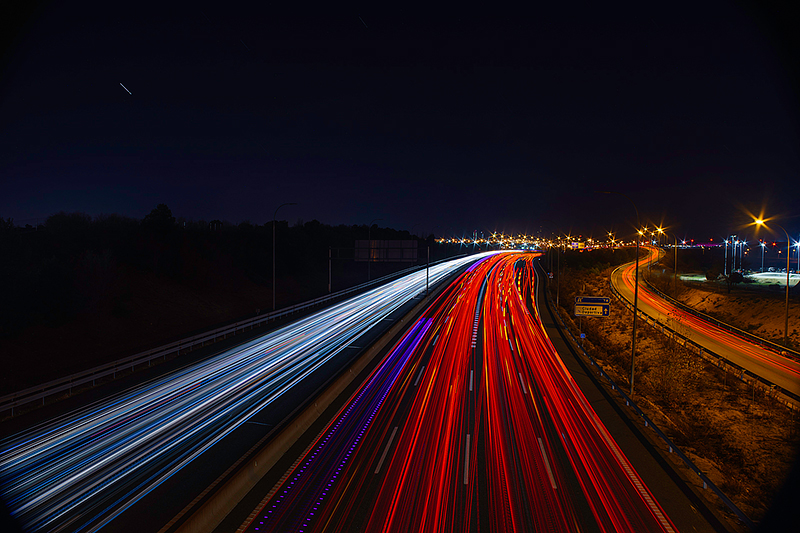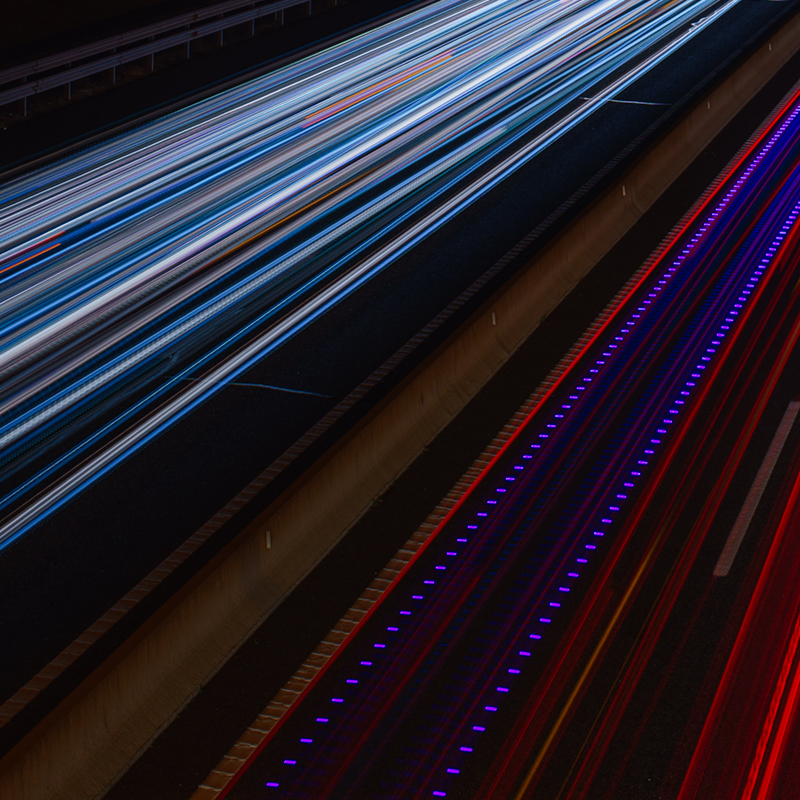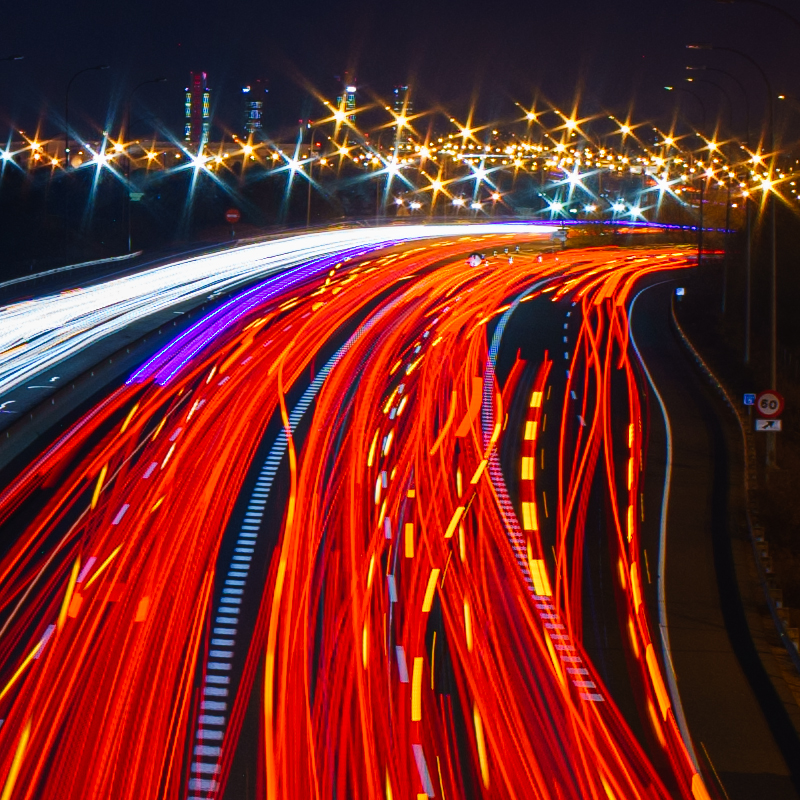La fusión HDR es radical no solo por el salto de 6EV, sino sobre todo porque como estamos construyendo un RAW donde aún no se ha hecho la interpolación Bayer, elegimos individualmente de qué RAW origen viene la información de cada fotocaptor individualmente, y además apurando al máximo (he considerado el umbral de la saturación en un 95%, lo que está a solo -0,07EV de la saturación).
Así tenemos fotocaptores procedentes de un RAW rodeados de vecinos procedentes del otro según los caprichos de la matriz de Bayer, pero al hacer el revelado las texturas salen perfectas (esperaba encontrarme artefactos por micro-desalineamientos). Los fotocaptores que vienen de la captura más expuesta se corrigen previamente en exposición a la baja (-6EV) para igualarlos a los otros antes de construir el RAW, o de lo contrario el revelado sería un desastre.
La escena es ésta (no me he preocupado de procesarla con mimo):
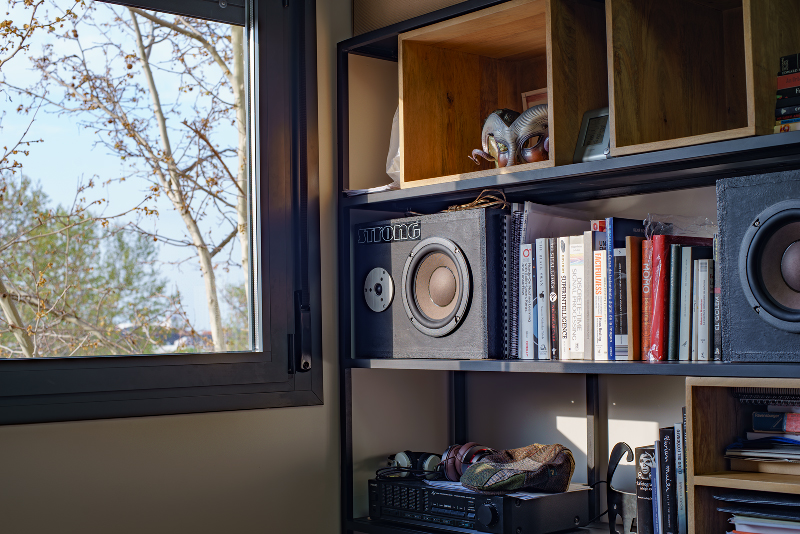
El histograma RAW del DNG HDR al ser de 16 bits está repleto de niveles y muestra los 12-13 pasos de rango dinámico de la escena:
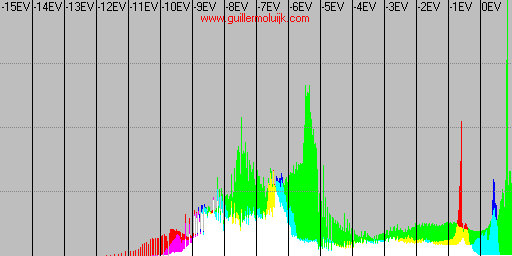
Aquí puede verse lo radical de la fusión (recortes al 200% del mapa de fusión, indicando en blanco los fotocaptores que vienen del RAW menos expuesto y en negro los del RAW más expuesto):
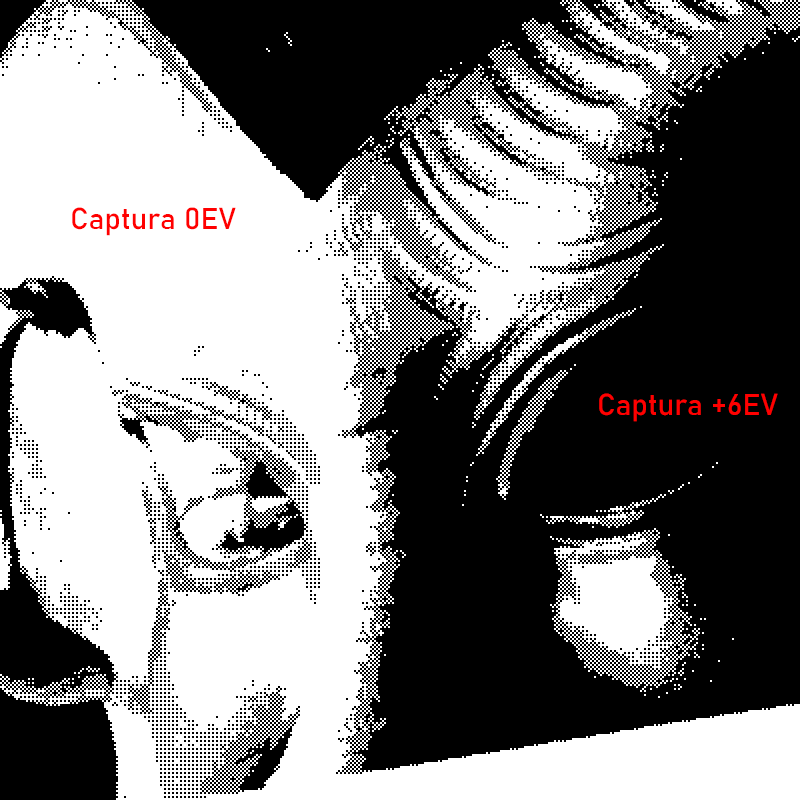
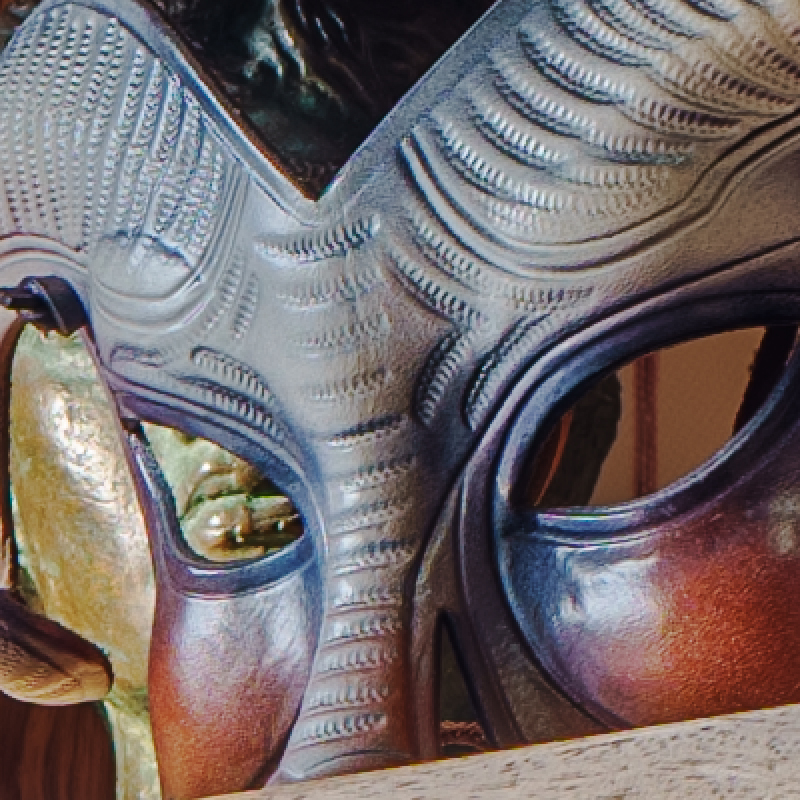
Ésta es la comparación del RAW HDR con lo que habríamos tenido de ruido en las sombras profundas si solo hubiéramos hecho la captura que derechea las altas luces:
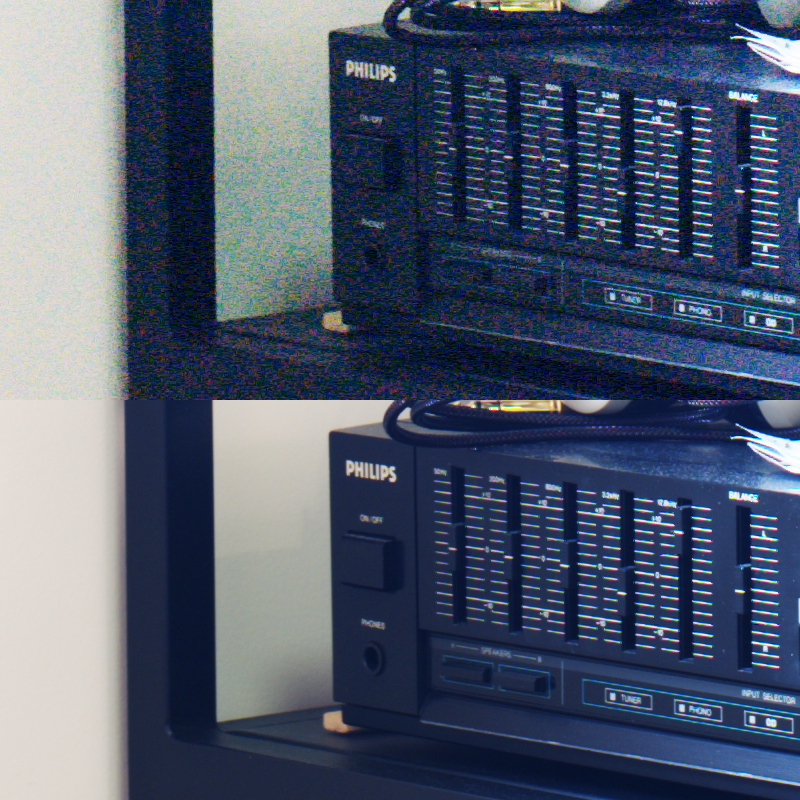
Por si alguien quiere jugar con el RAW HDR: hdr.dng
Salu2!
